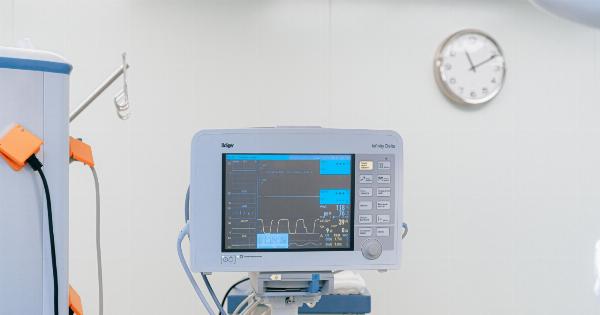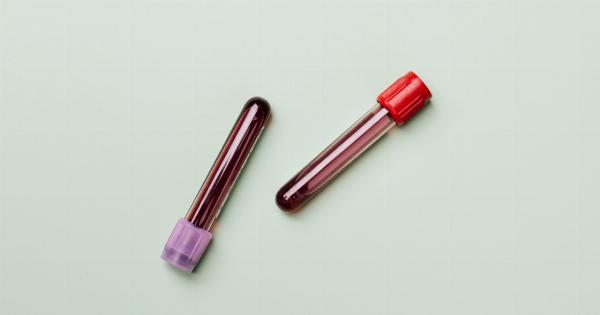The thyroid is a small, butterfly-shaped gland located in the front of your neck. Despite its modest size, it plays a crucial role in regulating various bodily functions and maintaining overall health.
However, problems with the thyroid can lead to various health issues. In fact, it is estimated that around 20 million Americans have some form of thyroid disorder, with many of them remaining undiagnosed.
In this article, we will discuss the importance of thyroid function and provide a simple test you can perform at home to assess whether your thyroid is working correctly.
Understanding Thyroid Function
In order to appreciate the significance of a properly functioning thyroid, it is essential to understand its role in the body.
The thyroid gland produces thyroid hormones, primarily thyroxine (T4) and triiodothyronine (T3). These hormones regulate a wide range of processes, including metabolism, growth, development, body temperature, and heart rate.
Common Thyroid Disorders
Thyroid disorders can be broadly classified into two main types: hypothyroidism and hyperthyroidism.
Hypothyroidism
Hypothyroidism occurs when the thyroid gland does not produce enough thyroid hormones. This can lead to a slowdown in bodily functions and a multitude of symptoms, including:.
- Unexplained weight gain
- Fatigue and sluggishness
- Depression and mood swings
- Dry skin and hair loss
- Cold intolerance
If left untreated, hypothyroidism can have a significant impact on an individual’s quality of life and overall health.
Hyperthyroidism
Hyperthyroidism, on the other hand, occurs when the thyroid gland produces an excess of thyroid hormones. This causes a speeding up of metabolic processes and can lead to symptoms such as:.
- Unintentional weight loss
- Increased heart rate and palpitations
- Anxiety and irritability
- Tremors and muscle weakness
- Heat intolerance and excessive sweating
Hyperthyroidism, if left untreated, can have serious consequences on cardiac health and overall well-being.
The Thyroid Self-Test
While it is always best to consult a healthcare professional for an accurate diagnosis, there is a simple self-test you can perform at home to get an initial idea about your thyroid function.
Here’s how the test works:.
Step 1: Gather the Necessary Items
To perform the thyroid self-test, you will need:.
- A mirror
- A glass of water
Step 2: Observe Your Neck Area
Stand in front of a mirror in a well-lit room and focus on the lower front area of your neck, just above your collarbones. Tip your head back slightly to visualize the thyroid gland.
Healthy thyroid glands are usually not visible. However, if you notice any swelling, lumps, or protrusions, it may be indicative of a thyroid disorder.
Step 3: Perform the Swallowing Test
Take a sip of water and tilt your head back slightly. Watch carefully while you swallow.
If you notice any unusual bulging or protrusion in the area, it might suggest an enlargement of the thyroid gland, known as a goiter. This can be associated with both hypothyroidism and hyperthyroidism.
Step 4: Check for Other Symptoms
While the self-test provides some initial insights, it is important to consider other symptoms associated with thyroid disorders:.
- Unexplained weight changes
- Changes in appetite
- Mood swings and depression
- Irregular menstrual periods (in women)
- Changes in heart rate or palpitations
If you experience any of these symptoms, it is advisable to consult a healthcare professional for further evaluation.
When to Seek Medical Help
If your self-test suggests a potential thyroid issue, it is important to consult a healthcare professional for a thorough evaluation.
Additionally, it is crucial to seek immediate medical attention if you experience any of the following symptoms:.
- Sudden and severe weight loss or weight gain
- Extreme fatigue or weakness
- Difficulty breathing or swallowing
- Rapid or irregular heartbeat
- Intense anxiety or irritability
These symptoms may indicate a more serious thyroid condition that requires prompt medical intervention.
Treatment Options for Thyroid Disorders
Once diagnosed with a thyroid disorder, appropriate treatment can be initiated to help restore thyroid function and alleviate symptoms.
The specific treatment approach depends on whether you have hypothyroidism or hyperthyroidism:.
Treatment for Hypothyroidism
Hypothyroidism is typically treated with synthetic thyroid hormone replacement medication, such as levothyroxine. This medication helps normalize hormone levels and alleviates symptoms.
Treatment for Hyperthyroidism
Hyperthyroidism treatment options include:.
- Antithyroid medications: These drugs help reduce the production of thyroid hormones.
- Radioactive iodine therapy: This treatment aims to destroy part of the thyroid gland, thereby reducing hormone production.
- Thyroid surgery: In certain cases, surgical removal of the thyroid gland may be necessary.
Consult with a healthcare professional to determine the most suitable treatment approach for your specific condition.
Conclusion
Regularly monitoring your thyroid function is important for maintaining overall health. By performing the simple self-test and paying attention to associated symptoms, you can gain valuable insights into your thyroid health.
If you suspect a thyroid disorder, it is crucial to consult a healthcare professional for proper evaluation and diagnosis. Remember, early detection and appropriate treatment can help manage thyroid disorders effectively.





























